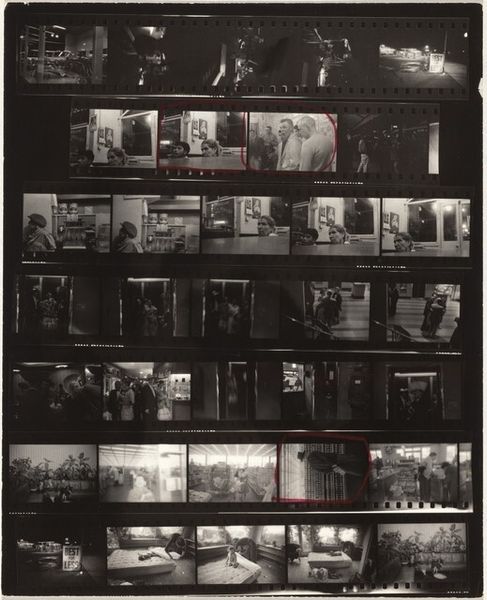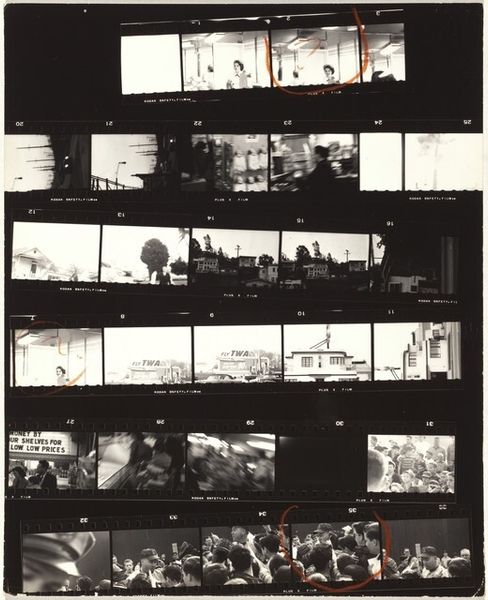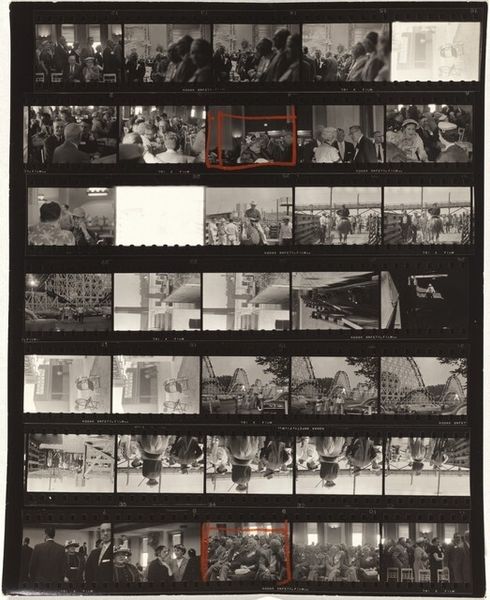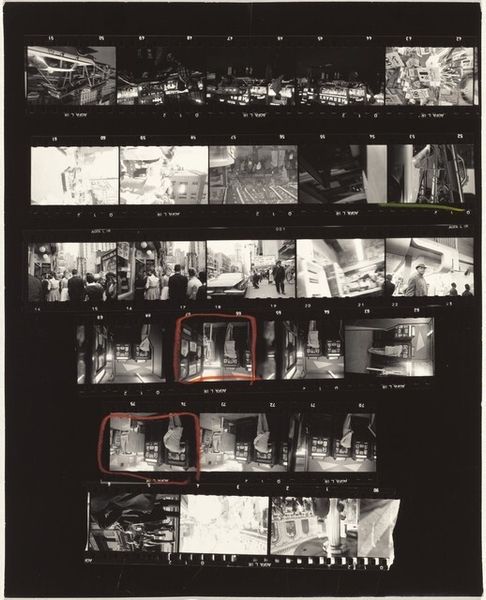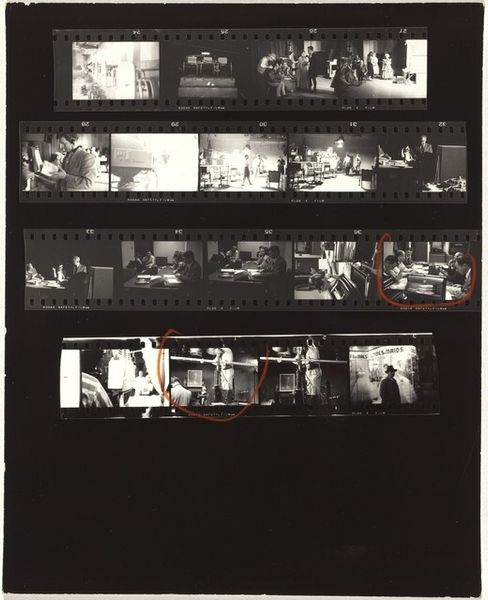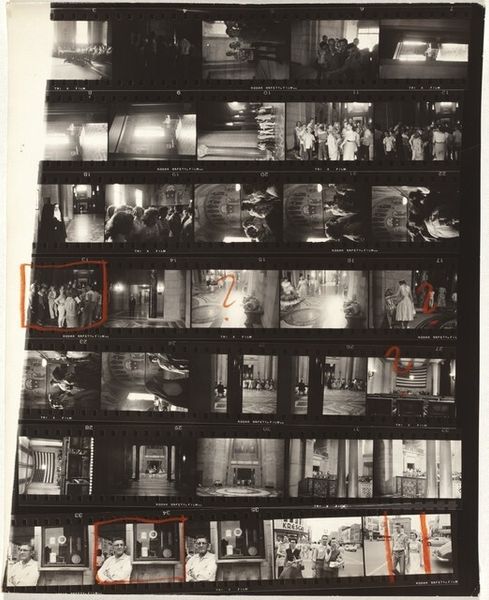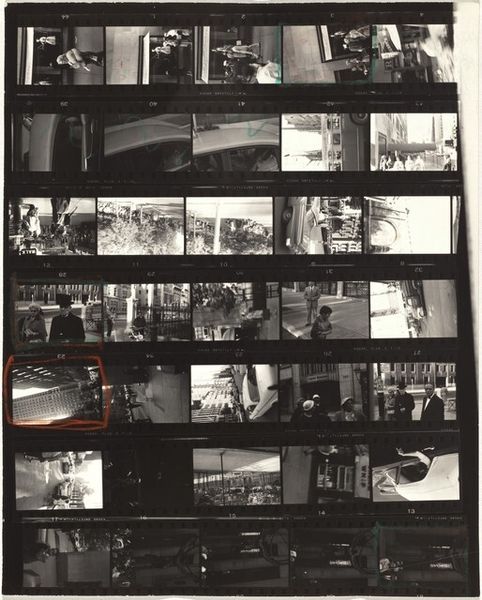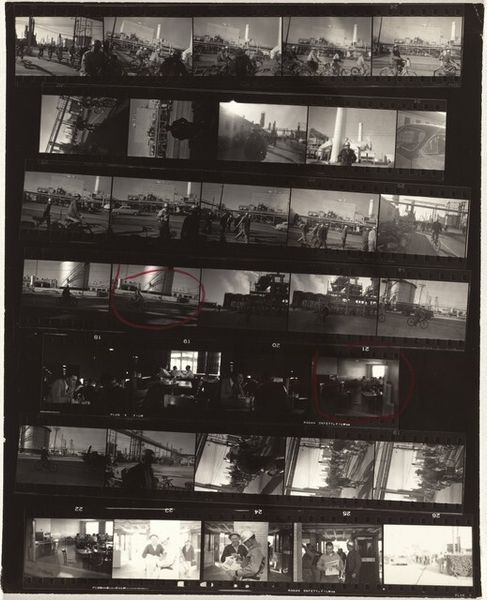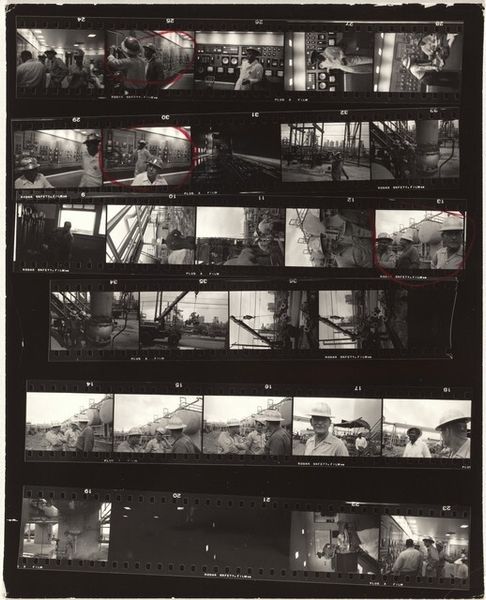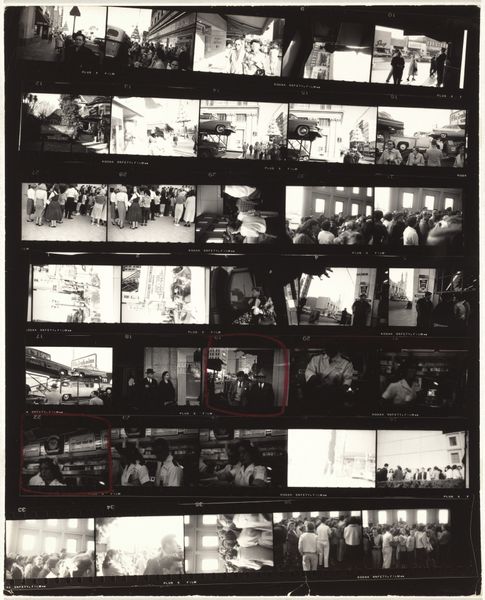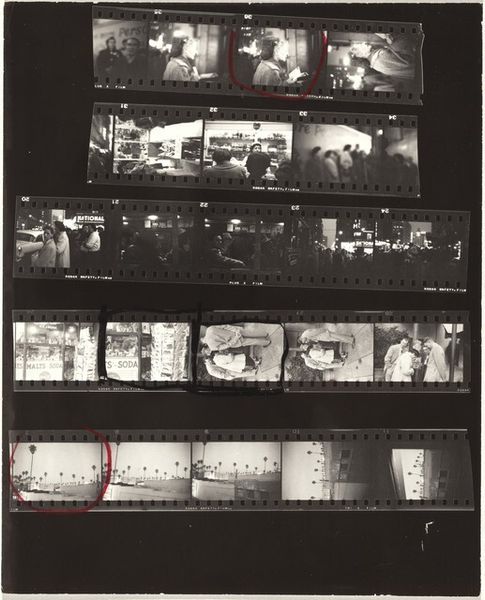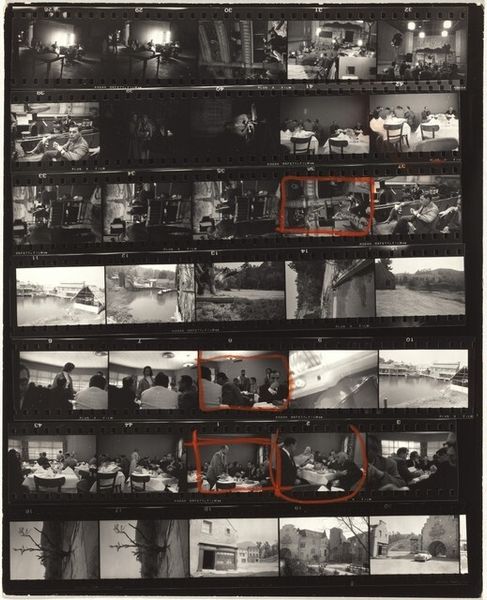
Dimensions: overall: 25.3 x 20.5 cm (9 15/16 x 8 1/16 in.)
Copyright: National Gallery of Art: CC0 1.0
Editor: This is "Guggenheim 456--Hollywood" by Robert Frank, taken between 1955 and 1956. It's a gelatin-silver print, and it strikes me as a kind of behind-the-scenes peek into Frank's process. How do you interpret this sheet of negatives? Curator: Well, what immediately strikes me is how this presentation subverts the typical expectations of a photographic artwork. We aren't given a single, polished image, but a whole contact sheet. This provides an intriguing look into Frank’s editing and selection processes, doesn't it? Consider how museums and galleries usually present finalized, individual images. Editor: That's true. It’s like we’re seeing the artist's choices laid bare, the moments he deemed worthy…and maybe the not-so-worthy ones too! So, how does showing the process like this change our relationship to the finished photographs we might see elsewhere? Curator: Exactly! It shifts the power dynamic. Instead of passively accepting the "perfect" image, we become active participants in the selection process. We are invited to consider the social context of 1950s Hollywood through a series of fractured moments. Notice the signs, the people, the urban landscape - these were all carefully considered by Frank, but often remain unseen in isolation. Does that altered viewing frame perhaps speak to the politics of imagery? Editor: I think so. By showing the whole sheet, it suggests that there isn't one definitive truth, but many perspectives within the same timeframe and cultural landscape. Curator: Precisely. Frank is making a statement about the construction of meaning itself, inviting viewers to question what we consider 'art' and whose stories get told, and how the museum plays into that role, too. Editor: That's fascinating. It's more than just a photo; it's a commentary on art and culture, right down to how we're meant to engage with it. Curator: Indeed. Seeing it this way challenges conventional viewing habits. This forces us to engage with the historical and political context behind the images. Editor: Well, seeing it in this new way helps me see past the single image! I understand Frank’s criticism so much more clearly. Curator: Likewise. It always invigorates one's appreciation when the political framework reveals something more.
Comments
No comments
Be the first to comment and join the conversation on the ultimate creative platform.
